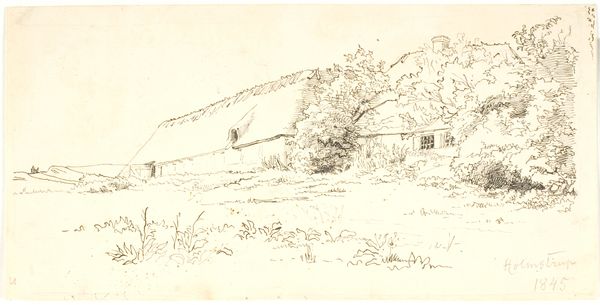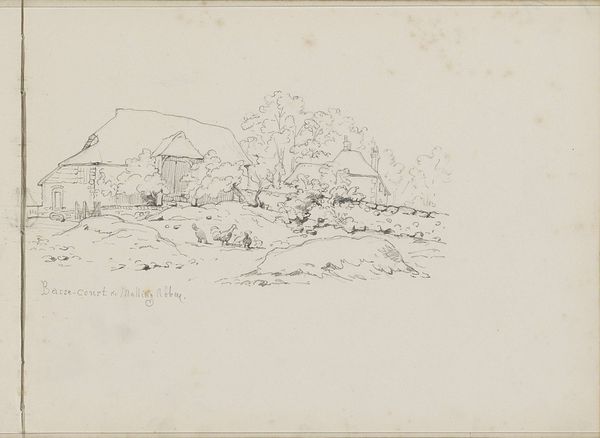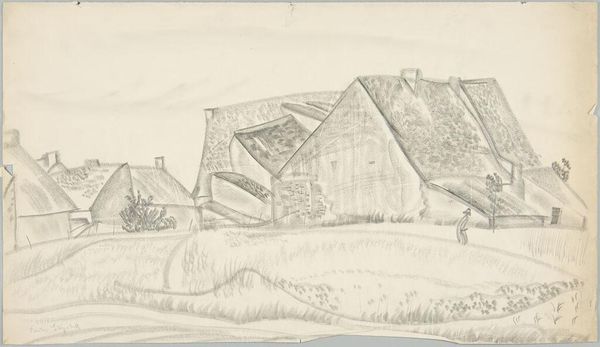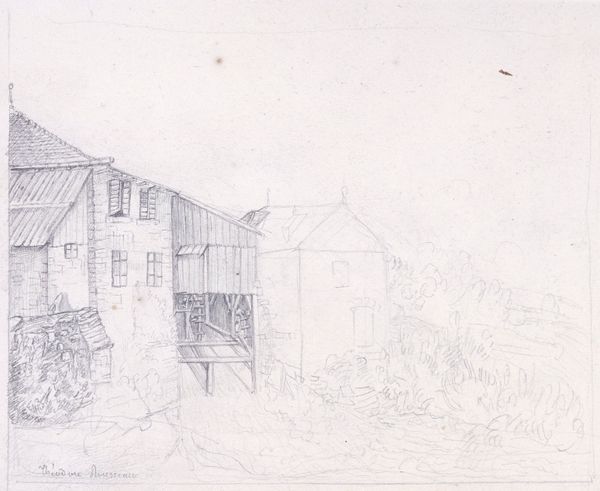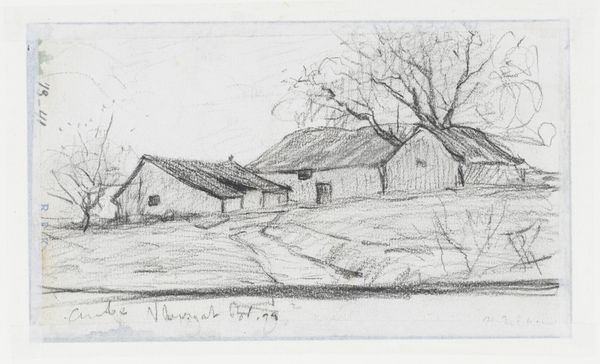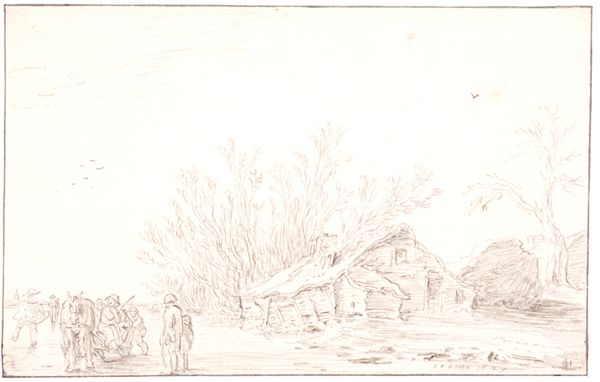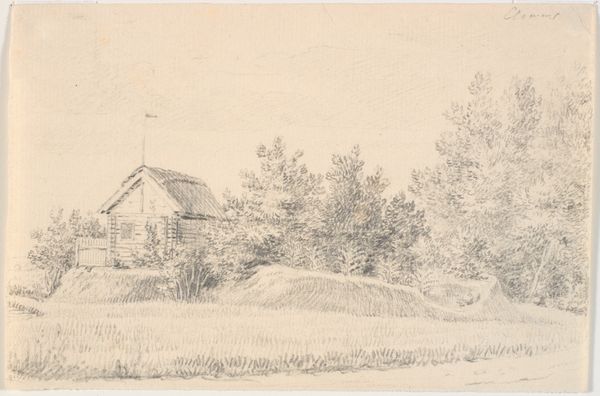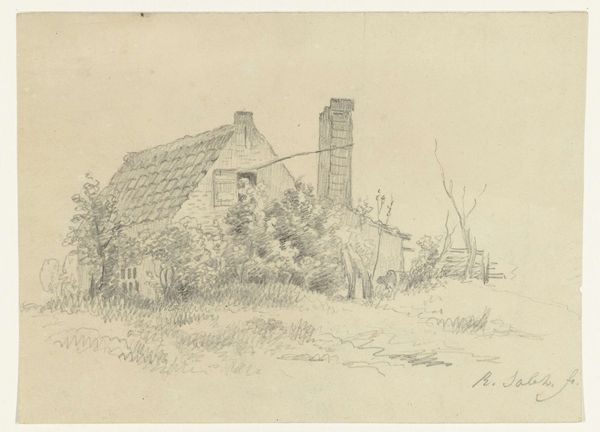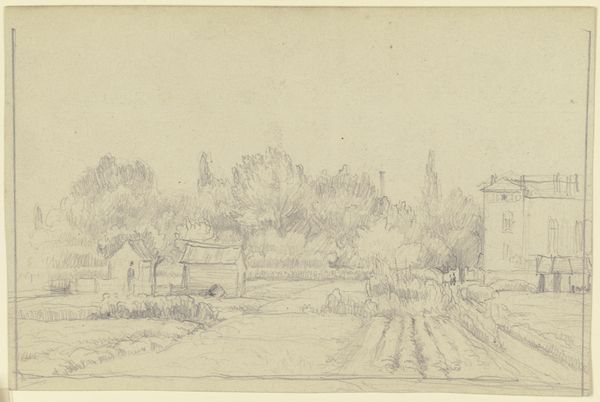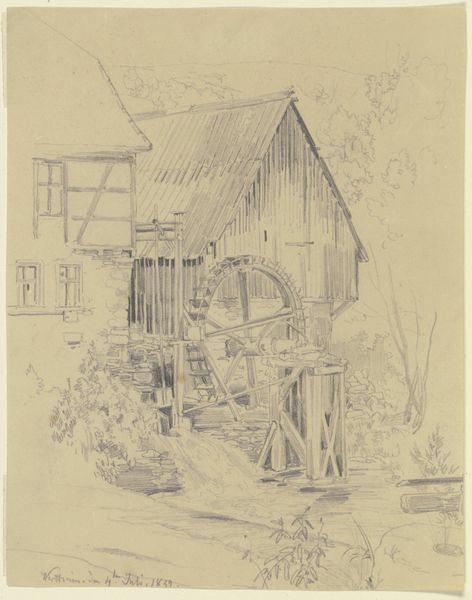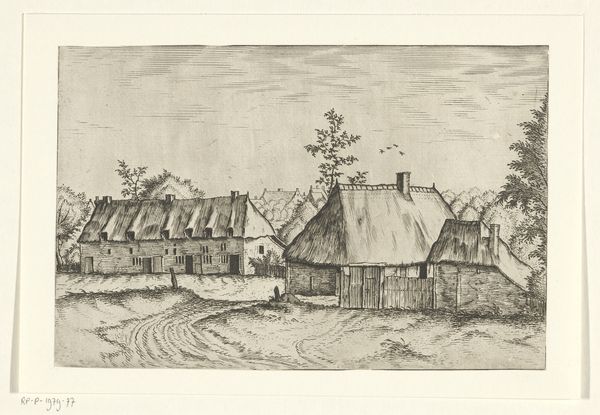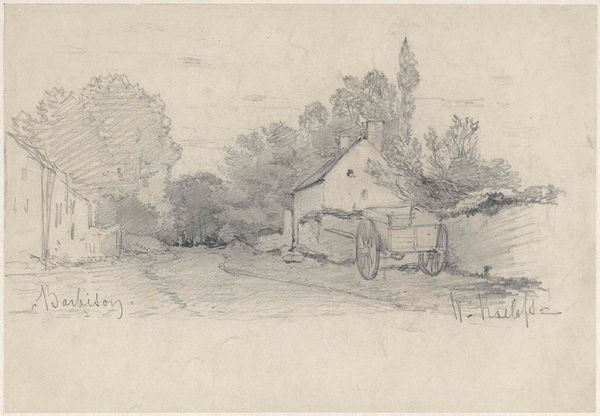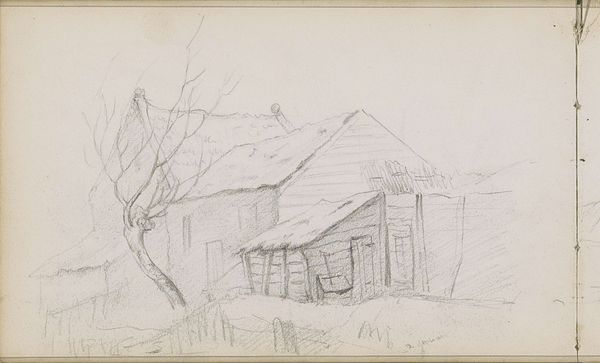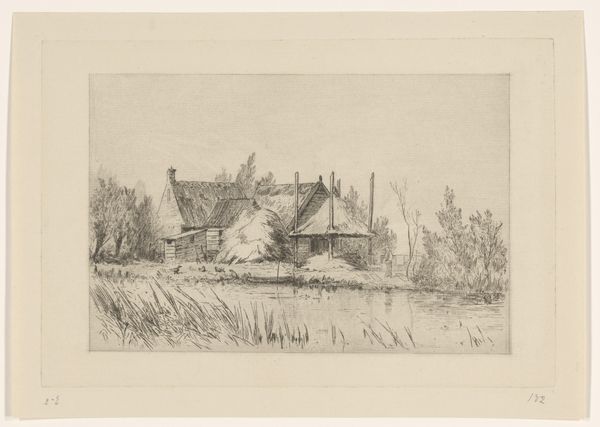
drawing, pencil, graphite
#
drawing
#
landscape
#
romanticism
#
pencil
#
france
#
graphite
#
cityscape
#
realism
Dimensions: 6 9/16 x 8 3/8 in. (16.67 x 21.27 cm)
Copyright: Public Domain
Editor: Here we have Theodore Rousseau’s "Sawmill," created in 1825 using pencil and graphite. It’s a very delicate drawing, almost ethereal. It feels like more than just a depiction of a building. How do you interpret this work? Curator: It's interesting to consider this "Sawmill" not just as a landscape drawing, but as a document of resource extraction. Think about the materiality of this image. Graphite and pencil, themselves materials derived from the earth, are used to depict a structure built to process lumber. Where did that lumber end up? What was it used for? Editor: That’s a fascinating angle. I hadn’t considered the full chain of production represented here. Curator: Exactly. We tend to romanticize these rural scenes, but this mill embodies the industrial processes that were beginning to transform the French landscape, and arguably contributing to the erasure of such rustic locales in the first place. This links the artwork back to its creation; labor went into this, but from what materials did the artwork and the subject derive? Editor: So, the drawing itself is implicated in the very process it depicts, that relationship between Romanticism and industrialization. Curator: Precisely. By using such delicate materials to illustrate a rough industrial scene, Rousseau inadvertently comments on how economic changes touch every aspect of life and affect art. Editor: This has really opened my eyes to how art can be connected to industry. Curator: And conversely how industries have, and still do, affect art.
Comments
No comments
Be the first to comment and join the conversation on the ultimate creative platform.
